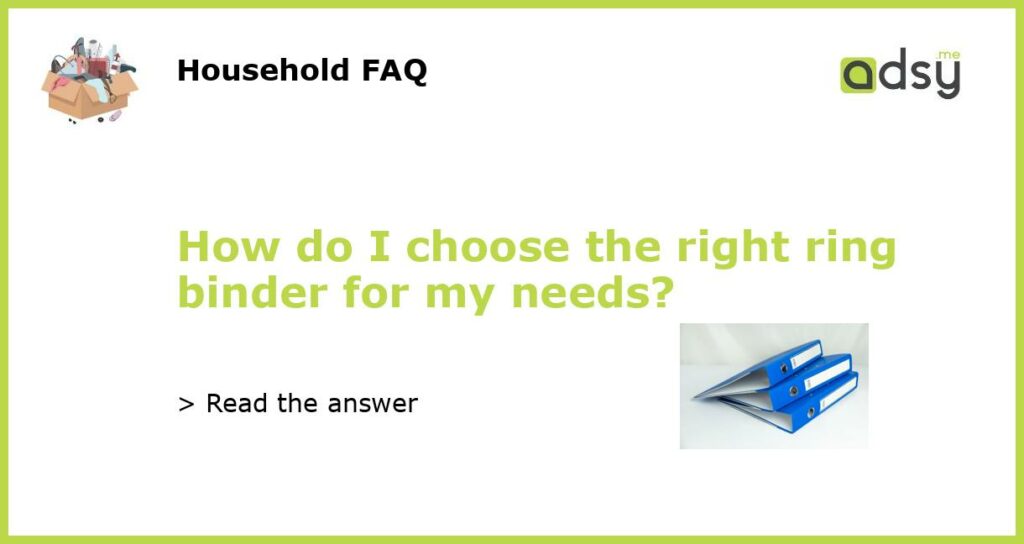Understanding Your Needs
When it comes to choosing the right ring binder, it’s important to start by understanding your specific needs. There are several factors to consider, such as the purpose of the binder, the volume of documents you need to store, and the level of durability required. By taking these factors into account, you can make an informed decision that will meet your needs and provide the functionality you require.
Determining the Purpose
The first step in choosing the right ring binder is determining its purpose. Are you looking for a binder to organize personal documents at home, or do you need one for business purposes, such as filing important contracts or presentations? The purpose of the binder will influence the size, material, and features you need. For example, if you need a binder for holding contracts, you may want one that is more professional-looking and made from high-quality materials.
Evaluating Volume and Capacity
Another important factor to consider is the volume of documents you need to store. If you only have a few documents, a smaller binder with less rings may be sufficient. However, if you have a large number of documents, you will need a binder with a larger capacity. Consider whether you will need to add or remove documents frequently, as this will also impact the type of binder you choose. For example, if you will be adding and removing pages often, a binder with easy-to-open rings or a clip mechanism may be more convenient.
Choosing the Right Material
The material of the binder is also a key consideration. Ring binders are commonly made from materials such as vinyl, polypropylene, or cardboard. Vinyl binders are durable and available in a wide range of colors and styles, making them a popular choice for both personal and professional use. Polypropylene binders are lightweight, flexible, and resistant to tearing, making them ideal for situations where durability is important. Cardboard binders are often the most affordable option, but they may not be as durable as other materials.
Considering Additional Features
Finally, consider any additional features that may be important for your needs. Some binders offer pockets or sleeves on the inside covers for storing loose papers or business cards. Others may have label holders on the spine for easy identification. It’s important to evaluate these features to determine if they will enhance the functionality of the binder for your specific needs. Additionally, consider the type of rings the binder has. D-ring binders provide more capacity and hold pages more securely, while O-ring binders are easier to navigate through and are ideal for frequent page turning.






